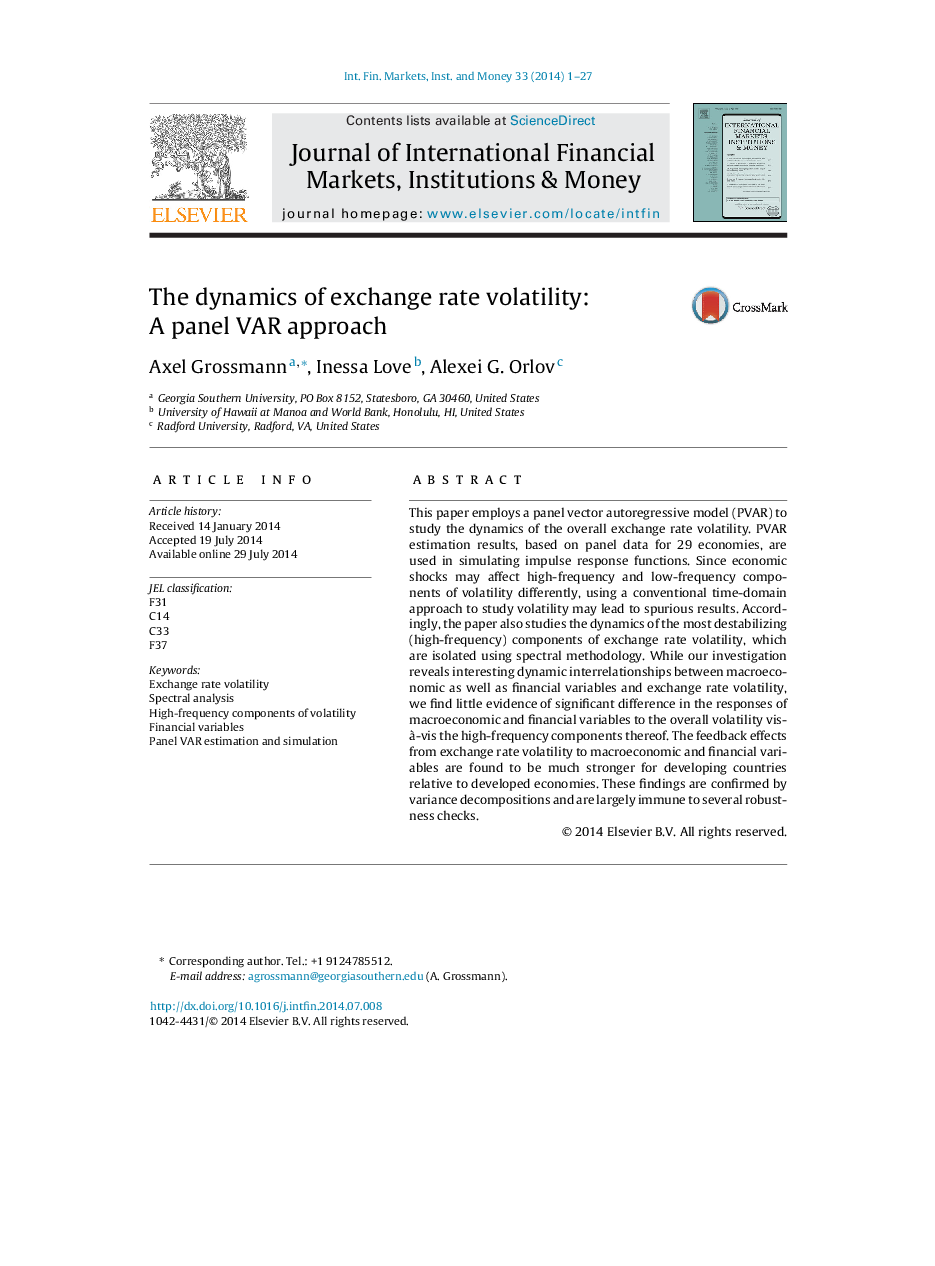ترجمه فارسی عنوان مقاله
پویایی نوسانات نرخ ارز: روش پانل VAR
عنوان انگلیسی
The dynamics of exchange rate volatility: A panel VAR approach
| کد مقاله | سال انتشار | تعداد صفحات مقاله انگلیسی |
|---|---|---|
| 44726 | 2014 | 27 صفحه PDF |
منبع

Publisher : Elsevier - Science Direct (الزویر - ساینس دایرکت)
Journal : Journal of International Financial Markets, Institutions and Money, Volume 33, November 2014, Pages 1–27
ترجمه کلمات کلیدی
نوسانات نرخ ارز - تجزیه و تحلیل طیفی - اجزای فرکانس بالای نوسانات - متغیرهای مالی - برآورد پنل VAR و شبیه سازی
کلمات کلیدی انگلیسی
F31; C14; C33; F37Exchange rate volatility; Spectral analysis; High-frequency components of volatility; Financial variables; Panel VAR estimation and simulation

